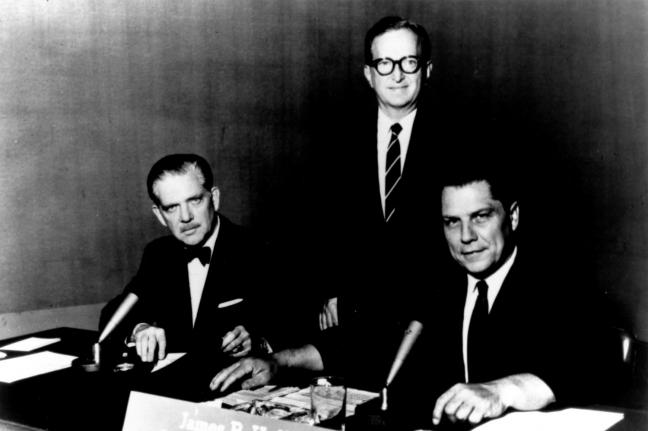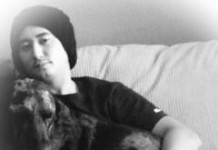40 Years of False Leads: Jimmy Hoffa Mystery Endures

WASHINGTON, July 30 (UPI) — It’s been 40 years to the day since Jimmy Hoffa went missing in Michigan, and though investigators are no closer to discovering what happened to the Teamsters boss, his disappearance still captivates.
Hoffa was legally declared dead in 1982, seven years after he drove to the Machus Red Fox restaurant in Bloomfield Township, Mich., for a supposed meeting with Mafia leaders Anthony Giacalone and Anthony Provenzano. When — or if — he really died remains a mystery.
What happened to him after that day in 1975 is a mystery, though plenty of people have had ideas over the intervening 40 years, some more plausible than others.
Hoffa’s wife, Josephine Hoffa, reported her husband missing the evening of July 30 when he failed to return home after the meeting. She said he left home at 1 p.m. and told her he’d be home by 4 p.m.
“I didn’t ask where he was going,” she said less than a year later. “When you are married to somebody as busy as Jimmy has always been, you never ask.”
Still, she remained convinced someone must have seen him at the time of his disappearance, but didn’t “want to get involved.
“People are so scared,” said Josephine, who died three years after she last saw her husband. “They’re afraid to talk.”
It didn’t take long for some people to start talking. But answering the questions of why Hoffa was allegedly killed, where his body ended up and who was responsible is where the story gets murky.
Hoffa’s disappearance took place less than five years after he was released from prison on a commutation from President Richard Nixon. He had served five years of a 13-year sentence for attempted bribery of a grand juror and fraud for improper use of the Teamsters’ pension fund.
As part of his deal with Nixon, Hoffa was prohibited from any involvement with the Teamsters until the end of his original 13-year prison term.
Hoffa’s son, James Hoffa, the current Teamsters president, believes that after being released from prison, his father wanted to reclaim the top position in the union from Frank Fitzsimmons, who took over for him while he was locked up. This desire ultimately made him a target for Provenzano, a New Jersey Teamsters leader and member of the Genovese crime family for whom Fitzsimmons reportedly worked.
In 1982, a federally protected witness, Charles Allen, an admitted Mafia hitman, told the U.S. Senate Permanent Committee on Investigations that Hoffa hired him to kill Fitzsimmons so he could reclaim his old role as president. He also wanted Provenzano killed.
That plan backfired, Allen said, when Hoffa’s foster son, Chuckie O’Brien, turned coat and told Provenzano about the plan.
Allen said Provenzano and New Jersey mobster Salvatore Briguglio had Hoffa killed, “ground up in little pieces, shipped to Florida and dumped into the swamps.”
In a 1987 interview with UPI, another longtime aid to Hoffa, Joseph Franco, said he believed the federal government was behind Hoffa’s disappearance. He said it was part of a conspiracy between Fitzsimmons and Nixon, both of whom wanted Hoffa to remain uninvolved with the Teamsters. Nixon allegedly received campaign support from the Teamsters under Fitzsimmons’ leadership.
“Stop and think,” Franco said. “The four most powerful people in America this century have all been assassinated. Jimmy wasn’t murdered. He was assassinated. I’m talking about leaders. Martin Luther King Jr., John Kennedy, Bobby Kennedy and Jimmy Hoffa.”
In another theory, former Teamsters President Jackie Presser told the FBI in 1989 that Teamsters insurance mogul Allen Dorfman hired mobster Nick Civella to kill Hoffa.
Later that year, Kenneth Walton, the former head of the FBI’s Detroit office from 1985 to 1988, said he knew who was responsible for Hoffa’s death but he couldn’t do anything about it because it put informants at too much risk.
Perhaps of even more interest to Hoffa enthusiasts is the mystery surrounding the location of his body. There seems to be little consensus among informants and investigators regarding his whereabouts except for one common theme — that his body was likely dismembered.
One of the more popular theories is that the former union boss could have been buriedunderneath the former Giants Stadium, the construction of which took place in New Jersey right around the time when Hoffa went missing. Self-proclaimed hitman Donald “Tony the Greek” Frankos told this story to Playboy magazine in 1989.
The stadium was demolished in 2010, and no sign of Hoffa’s body was found.
His body also wasn’t found in a 2003 hunt in a suburban Detroit back yard, or in 2006during a two-week dig at a Michigan farm. Soil tested beneath a suburban Detroit shedin 2012 turned up no signs of human remains, and a three-day search in rural Michigan was halted in June 2013 after no signs of his body were found.
There was even one suggestion Hoffa may have been buried in the foundation of a poker club and restaurant in Gardena, Calif., after a dispute with a businessman there.His body wasn’t found, though, in 2000 when Hustler publisher Larry Flynt demolished the existing building and constructed the Hustler Casino.
Meanwhile, DNA tests on some blood found in the floorboards of a Detroit house in 2005 did not match that of Hoffa, despite suspicions.
Like Us on Facebook for more stories from GephardtDaily.com






